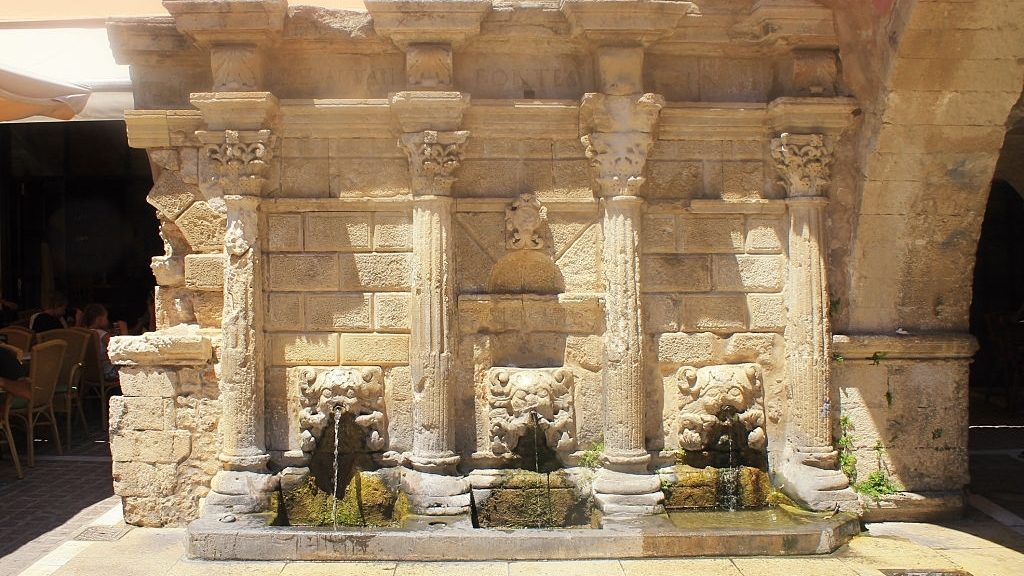
Rimondi Fountain – Rethymno
The Rimondi Fountain is one of the most well-known attractions in the city of Rethymno, including the Guora Gate, the Clock Tower (that unfortunately no longer exists) and the Kara Musa Phasha mosque. The cities of Crete have always had a water supply problem, which the Venetians faced by building aqueducts and fountains.
Today in the city of Rethymno eight fountains are preserved, of which only one survives from the Venetian years and is none other than the Rimondi Fountain, or “Vrysakia” as the locals call it. According to a legend, drinking from the fountain will guarantee eternal youth.
The fountain was built by, and named after the Rector (commander) of Rethymno, A. Rimandi and was located in the heart of the city, by present-day Petichaki Square. It covered a significant part of the town’s water needs and was built in 1626. It consists of three troughs from where the water runs respectively into three taps in the shape of a lion’s head. Four ribbed columns ending in Corinthian capitals support a Latin inscription, while behind the fountain is the small tank that supplies water to the taps. Later, during the Turkish occupation, a hemispherical dome was added over the fountain, from which one pillar is still preserved. “Vrysakia” remains a typical, as well as well-photographed corner of the old town and a favourite meeting point of the people of Rethymno.
Walking around the Old Town of Rethymno is one of the best ways to get to know the area. The most important sights are arguably found around the “Old Town”. You will discover its narrow alleyways, picturesque corners, architectural treasures, old mansions and distinct traces of the conquerors who passed through here. Very close to the fountain, we find the Marine Life Museum that displays a part of the massive collection that belongs to Moschakio Athens Museum as well as the Historical and Folklore Museum of Rethymno. The museum is housed within a restored 17th-century Venetian mansion, and the collection originates from donations and purchases. It numbers over 5.000 exhibits. The permanent exhibition areas extend into five rooms and mostly include traditional handicraft and folk art objects.